The miraculous story of Claude Newman & his conversion through the intercession of the Virgin Mary

The remarkable true story of the miraculous intercession of the Virgin Mary in 1944 to prisoner Claude Newman of Mississippi
-The Virgin Mary appears in a series of visions through the intercession of the Miraculous Medal and converts two men on death row.
By: Glenn Dallaire
Claude Newman was an African American man who was born on December 1, 1923 to Willie and Floretta (Young) Newman in Stuttgart, Arkansas. In 1928, Claude’s father Willie takes Claude and his older brother away from their mother for unknown reasons, and they are brought to their grandmother, Ellen Newman, of Bovina, Warren County, Mississippi.
In 1939, Claude's beloved grandmother, Ellen Newman, marries a man named Sid Cook. Soon Sid becomes sexually abusive toward Ellen, which deeply angers Claude. In 1940, Claude works as a farmhand on Ceres Plantation in Bovina, Mississippi. The plantation is owned by a wealthy landowner named U.G. Flowers, and Sid Cook was born and raised on this plantation. One biographer also has Claude getting married also in 1940 at age 17 to a young woman of the same age.
On Dec.19, 1942, Claude is apparently still very angered by Sid's abusive treatment towards his grandmother Ellen, and egged on by dominant friend named Elbert Harris, Claude lies in waiting at Sid Cook’s house (Sid Cook and Ellen Newman have since seperated). Claude shoots Sid as he enters, killing him, and takes his money, then flees to his mothers house in Arkansas, arriving on Dec 20th.
Claude is arrested and sent to prison on death row
In January 1943, Claude is apprehended in Arkansas and is returned to Vicksburg, Mississippi and makes a coerced confession on Jan. 13. Despite protests of Claude’s lawyer Harry K. Murray, his confession is admitted as evidence, and he is found guilty by jury, and is initially sentenced to die in the electric chair on May 14, 1943. Later an appeal to retry the case is rejected by State Attorney General and he is rescheduled to be executed on January 20, 1944.
Claude receives the Miraculous Medal of the Blessed Virgin Mary
The majority of the information that will now be presented comes from a tape recording of a radio show interview of Father O'Leary- a priest who came to know Claude very well during Claude's imprisionment.
While Claude was in jail awaiting execution, he shared a cell-block with four other prisoners. One night, the five men were sitting around talking and eventually the conversation ran out. During this time, Claude noticed a medal on a string around one of the other prisoner's neck. Curious, he asked the other prisoner what the medal was. The young prisoner was a Catholic, but he apparently did not know (or did not want to talk) about the medal, and seemingly embarrassed, he appeared angry and suddenly took the medal off from around his own neck and threw it on the floor at Claude's feet with a curse and a cuss, telling him to "take the thing". Claude picked up the medal, and after looking it over, he placed it around his own neck, although he had no idea whose image it was on the medal; to him it was simply a trinket, but for some reason he felt attracted to it, and wanted to wear it.
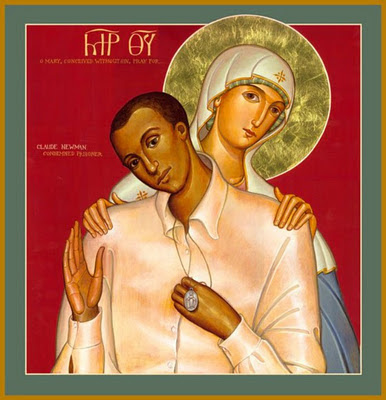 The Blessed Virgin Mary appears to Claude in a vision
The Blessed Virgin Mary appears to Claude in a vision(The Icon to the left is of “Mary the Teacher” © Copyright 2004 by Brother Claude Lane, OSB, Mount Angel Abbey. This beautiful icon is a representation of the amazing facts below. Click here for more info about Brother Claude's iconography.)
During the night while sleeping on top of his cot, he was awakened with a touch upon his wrist. Awakening with a start, there stood, as Claude told Father O’Leary afterwards, ‘the most beautiful Woman that God ever Created’.
At first he was quite frightened, not knowing what to make of this extraordinary beautiful glowing Woman. The Lady soon calmed Claude down, and then said to
him, "If you would like Me to be your Mother, and you would like to be My child, send for a priest of the Catholic Church."
And after saying these words She suddenly disappeared.
Excited, Claude immediately started to yell "a ghost, a ghost", and started screaming that he wanted a Catholic priest.
Father Robert O'Leary SVD (1911-1984), the priest who tells the story, was called first thing the next morning. Upon arrival he went to see Claude who told him of what had happened the night before. Deeply impressed by the events, Claude, along with the other four men in his cell-block, asked for religious instruction in the Catholic faith.
Claude and some of the other prisoners receive instruction in the Catholic faith
Father O'Leary returned to the prison the next day to begin instruction for the prisoners. It was then that the priest learned that Claude Newman could neither read nor write at all. The only way he could tell if a book was right-side-up was if the book contained a picture. Claude told him that he had never been to school, and Father O’Leary soon discovered that his ignorance of religion was even more profound. He knew practically nothing about religion or the Christian faith. He knew that there was a God, but he did not know that Jesus was God. And so Claude began receiving instructions, and the other prisoners helped him with his studies.
After a few days, two of the religious Sisters from Father O'Leary's parish-school obtained permission from the warden to come to the prison. They wanted to meet Claude and hear his remarkable story, and they also wanted to visit the women in the prison. Soon, on another floor of the prison, the Sisters began to teach some of the women-prisoners the catechism as well.
A heavenly lesson about Confession
Several weeks passed, and it came time when Father O'Leary was going to give instructions about the Sacrament of Confession. The Sisters too sat in on the class. The priest said to the prisoners, "Ok boys, today I'm going to teach you about the Sacrament of Confession."
Claude said, "Oh, I know about that! The Lady told me that when we go to confession we are kneeling down not before a priest, but we're kneeling down by the Cross of Her Son. And that when we are truly sorry for our sins, and we confess our sins, the Blood He shed flows down over us and washes us free from all sins."
Hearing Claude say this, Father O'Leary and the Sisters sat stunned with their mouths wide open. Claude thought they were angry and said, "Oh don't be angry, don't be angry, I didn't mean to blurt it out."
The priest said, "We're not angry Claude. We are just surprised. You have seen Her again?"
Claude replied, "Come around the cell-block away from the others."
Proof that the Blessed Virgin Mary was appearing to Claude
When they were alone, Claude said to the priest, "She told me that if you doubted me or
showed hesitancy, I was to remind you that lying in a ditch in Holland in 1940, you made a vow to Her which She's still waiting for you to keep."
And, Father O'Leary recalls, "Claude then told me precisely what the vow was."
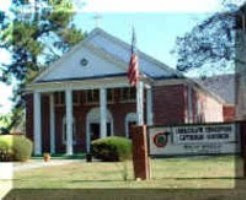 Claude's revelation absolutely convinced Father O'Leary that Claude was telling the truth about his visions of Our Lady. The promise Fr. O’Leary made to Our Lady in 1940 from a ditch in Holland (the proof Claude gave the priest that Our Lady really was appearing to him) was this: that when he could, he would build a church in honor of Our Lady’s Immaculate Conception. He did just that in 1947. He had been transferred to Clarksdale, Mississippi in 1945 when a group African American Catholic laymen asked to have a church built there. The Bishop of Natchez, Mississippi had been sent $5000 by Archbishop Cushing of Boston for the “Negro missions.” The Bishop and Father O’Leary commissioned the church of the Immaculate Conception to be built, and it is still there today (photo left)
Claude's revelation absolutely convinced Father O'Leary that Claude was telling the truth about his visions of Our Lady. The promise Fr. O’Leary made to Our Lady in 1940 from a ditch in Holland (the proof Claude gave the priest that Our Lady really was appearing to him) was this: that when he could, he would build a church in honor of Our Lady’s Immaculate Conception. He did just that in 1947. He had been transferred to Clarksdale, Mississippi in 1945 when a group African American Catholic laymen asked to have a church built there. The Bishop of Natchez, Mississippi had been sent $5000 by Archbishop Cushing of Boston for the “Negro missions.” The Bishop and Father O’Leary commissioned the church of the Immaculate Conception to be built, and it is still there today (photo left)Father O’Leary and Clark then returned to the catechism class on Confession. And Claude kept telling the other prisoners, "You should not be afraid to go to confession. You're really telling God your sins, not the priest”
Then Claude said,
"You know, the Lady said that Confession is something like a telephone. We talk through the priest to God, and God talks back to us through the priest."
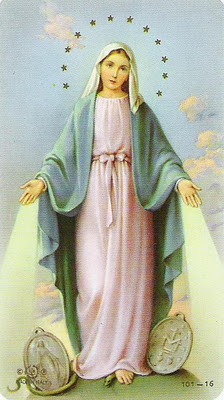 A heavenly lesson about Holy Communion
A heavenly lesson about Holy CommunionAbout a week later, Father O'Leary was preparing to teach the class about the Blessed Sacrament. The Sisters were again present for this lesson too. Claude indicated that the Lady had also taught him about the Eucharist, and he asked if he could tell the priest what She said.
Fr. O’Leary agreed immediately. Claude related, "The Lady told me that in Communion, I will only see what looks like a piece of bread. But She told me that It is really and truly Her Son, and that He will be with me just as He was with Her before He was born in Bethlehem. She told me that I should spend my time like She did during Her lifetime with Him-- in loving Him, adoring Him, thanking Him, praising Him and asking Him for blessings. I shouldn't be distracted or bothered by anybody else or anything else, but I should spend those few minutes in my thoughts alone with Him."
Claude is received into the Catholic church and scheduled to be executed
As the weeks progressed, eventually they finished the catechism instructions and Claude and the other prisoners were received into the Catholic Church. The St. Mary’s parish (Vicksburg, MI) baptismal log has recorded his baptism on January 16, 1944. Fr. O’Leary officiated and a young nun, Sr. Bena Henken, served as his godmother.
Soon afterwards the time came for Claude to be executed. He was to be executed at five minutes after twelve, midnight, on January 20, 1944.
The sheriff, named Williamson, asked him, "Claude, you have the privilege of a last request. What do you want?"
"Well," said Claude, "all of my friends are all shook up. The jailer is all shook up. But you don't
understand. I'm not going to die; only this body. I'm going to be with Her. So, then I would like to have a party"
"What do you mean?” asked the sheriff.
"A party!" said Claude. "Will you give Father O’Leary permission to bring in some cakes and ice cream and will you allow the prisoners on the second floor to be freed in the main room so that we can all be together and have a party?"
"Somebody might attack Father," cautioned the warden.
Claude turned to the men who were standing by and said, "Oh no they won't, right fellas?"
The warden consented and posted additional guards for the party. So, Father O’Leary visited a wealthy patron of the parish, and she generously supplied the ice cream and cake, and everyone enjoyed the party.
Afterwards, because Claude had requested it, they made a Holy Hour, praying especially for Claude and for all of their souls. Fr. O’Leary brought prayer books from the Church, and they all said together the Stations of the Cross, and made a Holy Hour, without the Blessed Sacrament.
As the time neared for Claude’s execution, the men were put back in their cells. The priest then went to the chapel to get the Blessed Sacrament so that he could give Claude Holy Communion in the moment before his execution.
Father O'Leary returned to Claude's cell. Claude knelt on one side of the bars, the priest
knelt on the other, and they prayed together as the clock ticked toward Claude's execution.
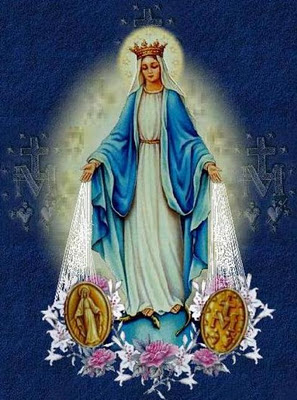 A two week stay of execution is granted
A two week stay of execution is grantedFifteen minutes before the execution, sheriff Williamson came running up the stairs shouting,
"Reprieve, Reprieve, the Governor has given a two-week reprieve!"
Claude had not been aware that the sheriff and the District Attorney were trying to get a stay of execution for Claude to save his life. But when Claude found out, he started to cry.
The priest and the sheriff assumed Claude’s reaction was that of joy because he was not going to be executed. However Claude said, "But you don't understand! If you ever saw Her face, and looked into Her eyes, you wouldn't want to live another day!"
Claude then continued, "What have I done wrong these past weeks that God would refuse me my going home?"
Father O’Leary then testified that Claude sobbed as one who was completely brokenhearted.
Bewildered, the sheriff then left the room. The priest remained and Claude eventually quieted down, then Father O’Leary gave Claude Holy Communion. Afterwards Claude said,
"Why Father? Why must I still remain here for two weeks?"
Claude generously sacrifices himself in an offering for a fellow prisoner
Father O’Leary then had a sudden inspiration. He reminded Claude about James Hughs, a white prisoner in the same jail who hated Claude intensely. This prisoner had led a horribly immoral life, and like Claude he too was sentenced to be executed for murder. James was raised a Catholic, but now he was a reprobate, and rejected God and all things Christian.
Father O’Leary then said "Maybe Our Blessed Mother wants you to offer this denial of being with Her for his conversion." And the priest continued, "Why don't you offer to God every
moment that you are seperated from your heavenly Mother for this prisoner, so that he will not be seperated from God for all eternity."
Claude thought for a moment, then agreed, and he asked Father O’Leary to teach him the words to make the offering. Father O’Leary complied, and he later testified that from that moment on the only two people on earth who knew about this personal offering were Claude and himself, because it was a private matter between God, the Blessed Mother, Claude and himself.
A few hours later (still on the morning after his reprieve of execution) Fr. O’Leary came once again to visit Claude, and Claude said to the priest, "James hated me before, but oh Father, how he hates me now!" (This was because James had heard about Claude’s reprieve and was jealous) To encourage him the good priest said, "Well, perhaps that's a good sign."
Claude’s execution
During his two weeks reprieve, Claude generously offered his sacrifice and prayers for his fellow prisoner, the reprobate James Hughs . Two weeks later, Claude was finally put to death by the electric chair on Feb.4, 1944.
Concerning Claude’s holy death Father O'Leary testified: "I've never seen anyone go to his death as joyfully and happily. Even the official witnesses and the newspaper reporters were amazed. They said they couldn't understand how anyone could go and sit in the electric chair while at the same time actually beaming with happiness."
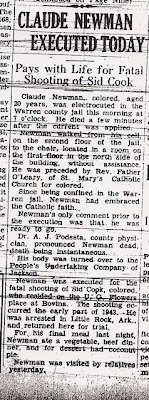
Claude's death notice was printed in the Vicksburg Evening News on the day of his execution Feb. 4, 1944 (see photo left). His last words to Father O'Leary were, "Father, I will remember you. And whenever you have a request, ask me, and I will ask Her."
The miraculous conversion & execution of prisoner James Hughs
Three months later, on May 19, 1944, the white man named James Hughs--the who Claude had offered his sacrifice for, was to be executed. Father O'Leary said, "This man was the filthiest, most immoral person I had ever come across. His hatred for God and for everything spiritual defied description."
He would not allow a priest or any clergyman in his cell. Just before his execution, the county doctor pleaded with him to at least kneel down and say the "Our Father" before the sheriff would come for him. The prisoner spat in the doctor's face.
When he was strapped into the electric chair, the sheriff said to him, "If you have something to say, say it now."
The condemned man started to blaspheme.
All of a sudden he stopped speaking, and his eyes became fixed on the corner of
the room, and his face turned to one of absolute horror. Suddenly he screamed in terror--a horrible scream that shocked everyone present.
 Turning to the sheriff, he then said, "Sheriff, get me a priest!"
Turning to the sheriff, he then said, "Sheriff, get me a priest!"Now, Father O'Leary had been in the room because Mississippi law at that time required a clergyman to be present at executions. The priest, however, had hidden himself behind some reporters because the condemned man had threatened to curse God if he saw a clergyman.
Upon calling for a priest, Father O'Leary immediately went to the condemned man. The room was cleared of everyone else, and the priest heard the man's confession. The man said he had been a Catholic, but turned away from his religion when he was 18 because of his immoral life. He confessed all of his sins with deep repentance and intense fervor.
While everyone was returning to the room, the sheriff asked the priest, "Father, what made him change his mind?"
"I don't know " said Father O'Leary, "I didn't ask him."
The sheriff said, "Well, I will never sleep tonight if I don't ask him."
 The Sheriff went to the condemned man and asked, "Son, what changed your mind?"
The Sheriff went to the condemned man and asked, "Son, what changed your mind?"The prisoner responded, "Remember that black man Claude – the one whom I hated so much? Well he's standing there [and he pointed], over in that corner. And behind him with one hand on each shoulder is the Blessed Virgin Mary. And Claude said to me, 'I offered my death in union with Christ on the Cross for your salvation. She has obtained for you this gift of seeing your place in Hell if you do not repent.'
I have been shown my place in Hell, and that's why I screamed."
James Hughs was executed as scheduled, but the heavenly appearence of our Blessed Mother with Claude Newman and the subsequent vision of hell had instantly converted his soul in the last moments of his life. With the help of the Blessed Virgin Mary, Father O'Leary had taught Claude to unite himself with the suffering of Jesus by offering his own sufferings to Him, just as we all can do for others, and Claude's suffering helped to pay the price for James' remarkable last minute conversion and repentance. Therefore we must never under-estimate the the value of our suffering joined with that of Jesus Christ’s, and also the power and loving intercession of Our Blessed Mother in heaven.
O’ Mary conceived without sin, pray for us who have recourse to Thee!
____________________________________________________________
I am very grateful to Brother Claude Lane OSB, of the Mount Angel Abbey, in St. Benedict, Oregon for the following information and chronology of the life of Claude Newman (Note: Br. Claude is the artist who created the beautiful icon of the Virgin Mary and Claude Newman in this article. Click here for more information about Brother Claude's iconography.)
Chronology of the Life of Claude Newman
1923- Dec.1, Claude Newman is born to Willie and Floretta Young Newman in Stuttgart, Arkansas.
1928- Claude and his older brother are removed from their mother by Willie, who takes them to be raised by their grandmother, Ellen Newman, in Bovina, Mississippi, east of Vicksburg.
1930- Six year old Claude appears in the Federal census, living with his Grandmother in Warren County. They reside on the Ike Henry place.
Late 1930s- Claude spends time in the CCC (Civilian Conservation Corp)
c.1939- Claude's grandmother, Ellen Newman, marries Sid Cook. Soon he becomes sexually abusive toward Ellen, which angers Claude.
c.1940-41- Claude works on Ceres Plantation in Bovina, owned by U. G. Flowers. Sid Cook was born and raised on this place. If Claude Newman has married, it was not registered in Warren Co. Perhaps he was married in another county, or parish of Louisiana. In any case, he is no longer with her by Dec. 19, 1942.
1942- Dec.19, Egged on by dominant friend Elbert Harris, Claude lies in waiting in Sid Cook’s house (Cook and Ellen Newman have since seperated). Claude shoots Sid as he enters, and takes his money, then flees to his mothers house in Little Rock, AR., arriving on the 20th. First time she has seen him since he was five. She is now re-married to a man named Rogers, who finds Claude a job. Claude now goes by the name ‘Ralph’.
Jan 1943- Claude is apprehended in Arizona and is returned to Vicksburg, Mississippi and makes a coerced confession on Jan. 13. Despite protests of Claude’s lawyer Harry K. Murray, confession is admitted as evidence. He is found guilty by an all white jury. He is sentenced to die in the electric chair on May 14, 1943. Appeal to re-try the case is rejected by State Attorney General. Sid Cook’s patron, U. G. Flowers, has too much influence.
Jan.20, 1944 is given as new date for execution.
1943-44 Sometime late in 1943, Claude puts on a miraculous medal, begins having visions of the Virgin Mary. She encourages him to find a priest and become a Catholic. Fr. Robert O’Leary, SVD of St. Mary’s for Colored, and Catholic County Doctor Augustine Podesta, minister to him.
1944- Jan.16, Fr. O’Leary baptizes Claude in jail with the name ‘Claude Jude’, with Sr. Benna Henken, SSpS standing as his sponsor. Just before Claude is to be executed on Jan. 20, a stay of execution of two weeks arrives. He is finally put to death on Feb.4, 1944. Claude has his favorite dessert, coconut pie, on the night before he dies. His body is buried in the historic African American “Beulah cemetary” in Vicksburg, MS. His death notice was printed in the Vicksburg Evening News on the day of his execution, Feb. 4, 1944.
A few months later on May 19, 1944, Claude appears in a vision along with the Blessed Mother, to his fellow inmate James Hughs – a white man who he had prayed and sacrificed for in the two weeks prior to his death, and who on this day is himself seated on the electric chair. Seeing the vision, the James immediately repents of his sins and is saved from eternal damnation, just moments before his execution.
1947- Fulfilling his previous promise to the Virgin Mary made in a ditch in Holland, Fr, O’Leary founds Immaculate Conception Parish (for African Americans) in Clarksville, Mississippi.
1960’s- Fr. O’Leary records a testimony of Claude Newman’s Story for a radio broadcast.
1984 –Death of Fr. Robert O’Leary, SVD (1911-1984)
2001- The March 2001 issue of The Catholic Family News publishes “The True Account of Prisoner Claude Newman (1944)” by John Vennari. This article is taken from the 1960’s radio broadcast testimony by Father Robert O’Leary.
2002- While looking for information on Cardinal Newman, Br. Claude Lane of Mount Angel Abbey, happens on the miraculous story of Claude Newman.
2003- In the early summer, Br. Claude is inspired to write the icon “Mary, the Teacher” and he begins the task of researching Claude Newman’s life with initial help from Catholic Family News, along with the research of John Sharpe Sr. of Phoenix, Arizona.
12/22/2011 -Additionally Brother Claude adds: “A historian by the name of Ralph Frasca has been working on a biography for Claude Newman. He did find the identity of the white reprobate for whom Claude offered his life. His name was James Hughs, and he was electrocuted in Vicksburg on May 19, 1944. That can be added to the chronology. Interestingly, a black woman was also executed (for murder) in Vicksburg on that same day, named Mildred Johnson. She, too, had become a Catholic through the ministrations of the nuns from the African American parish of St. Mary's. These last two findings were the work of Mr. Frasca, and can, as I said, be added to the chronology." –Brother Claude Lane, OSB
Addendum: Feb 4, 2013:
I received an email from a gentleman and his wife who are said to have investigated the facts concerning Claude Newman. One of the details they pointed out is the following:
"His (Claude Newmans') official Mississippi department of health death certificate lists Newman’s place of burial as “Beluah Cemetery.” As we subsequently learned from Ms. Yolande Robbins, a African-American funeral director in Vicksburg, that this was a misspelling of “Beulah Cemetery,” Vicksburg’s only public burial ground for blacks in Newman’s day, which, according to Robbins, was undergoing restoration at the time to help identify the many unknown bodies."
Additionally the email also points out: "...Newspaper accounts reported that Newman was executed at 7:00A.M on Feb. 4, 1944, not midnight as Fr. O’Leary claimed."
"....Other [newspaper] accounts dealt with the execution on May 19 that year of one James Samuel Hughes, most certainly the man Fr. O’Leary described as the white prisoner who had committed incest with his daughters and had shot a policeman. But he was not, as Fr. O’Leary asserted, a lapsed Catholic. The newspaper described him as “a member of the ‘Holy Roller’ faith.”
O’ Mary conceived without sin, pray for us who have recourse to Thee!
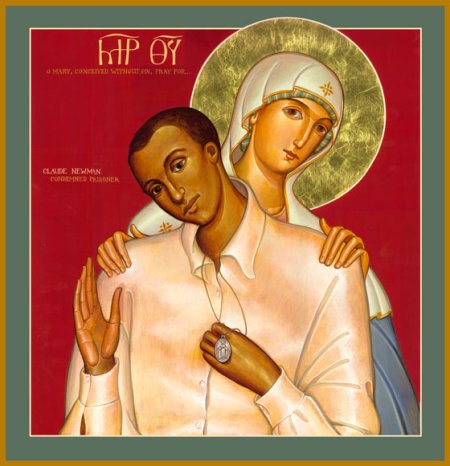
 Príbeh obrátenia väzňa - Claudia Newmana cez Pannu Máriu
Príbeh obrátenia väzňa - Claudia Newmana cez Pannu Máriu 

 No pani ho upokojila a skôr, ako zmizla, ma povedala: „Keď chceš, aby som bola tvoja matka, a keď chceš byť aj ty mojím dieťaťom, daj si zavolať katolíckeho kňaza." Claude zostal znova sám a tak nahlas, že zobudil aj svojich spoluväzňov, zakričal: „Priveďte mi katolíckeho kňaza !
No pani ho upokojila a skôr, ako zmizla, ma povedala: „Keď chceš, aby som bola tvoja matka, a keď chceš byť aj ty mojím dieťaťom, daj si zavolať katolíckeho kňaza." Claude zostal znova sám a tak nahlas, že zobudil aj svojich spoluväzňov, zakričal: „Priveďte mi katolíckeho kňaza ! 
 Nebojte sa spovede! Boh cez kňaza hovorí k nám a odpovedá nám.
Nebojte sa spovede! Boh cez kňaza hovorí k nám a odpovedá nám.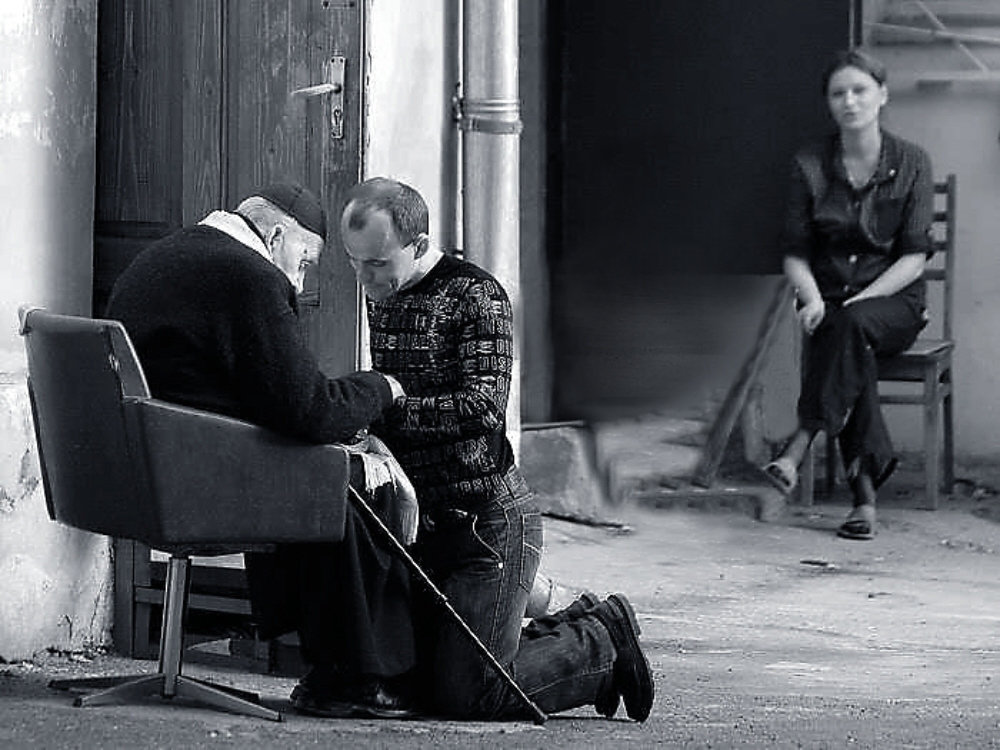

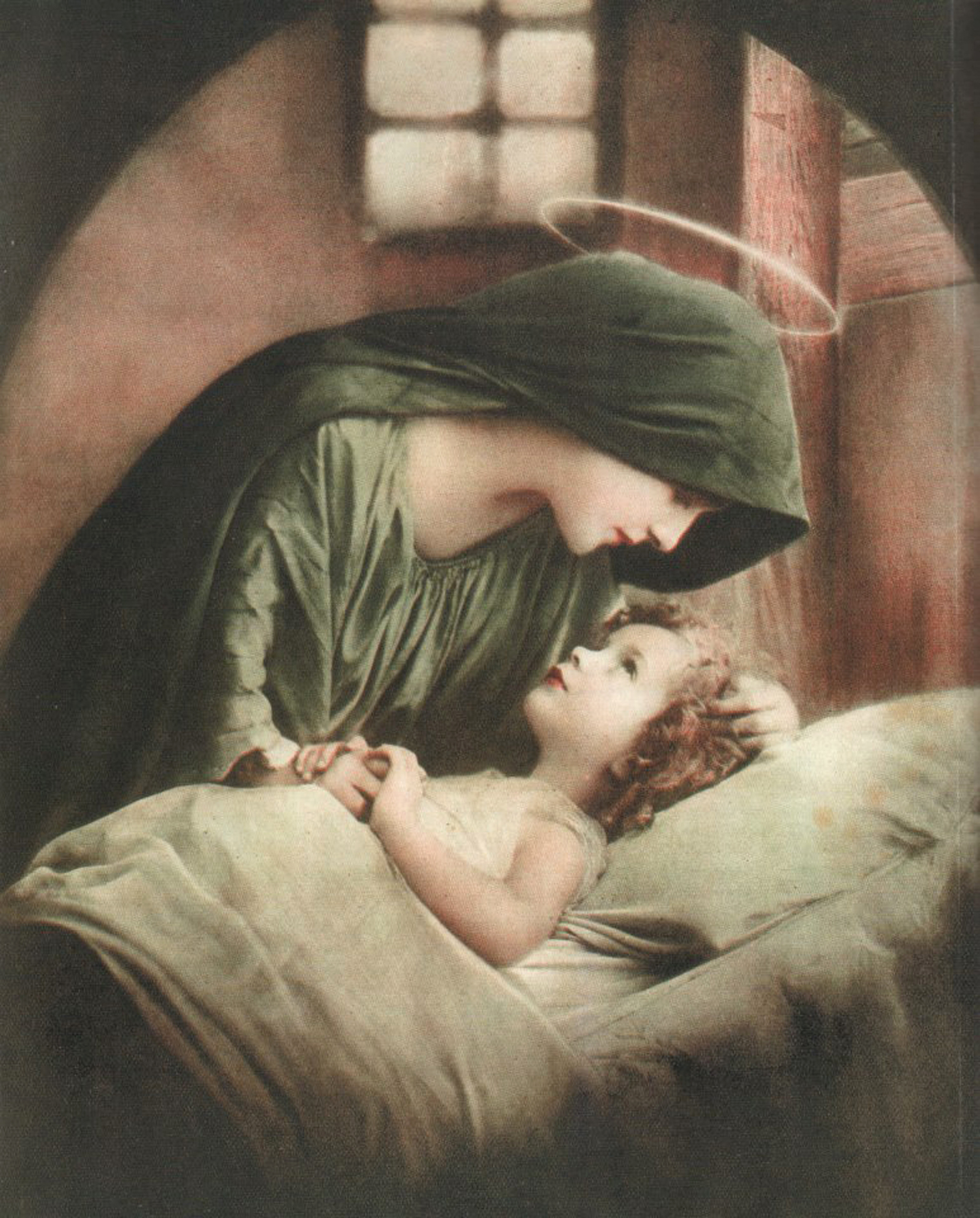
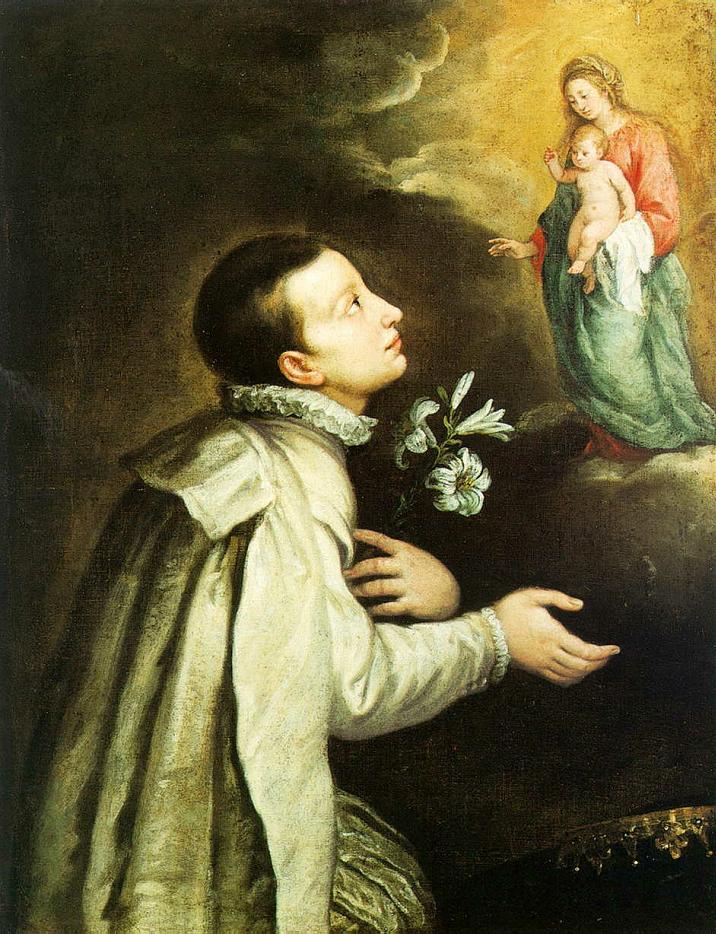
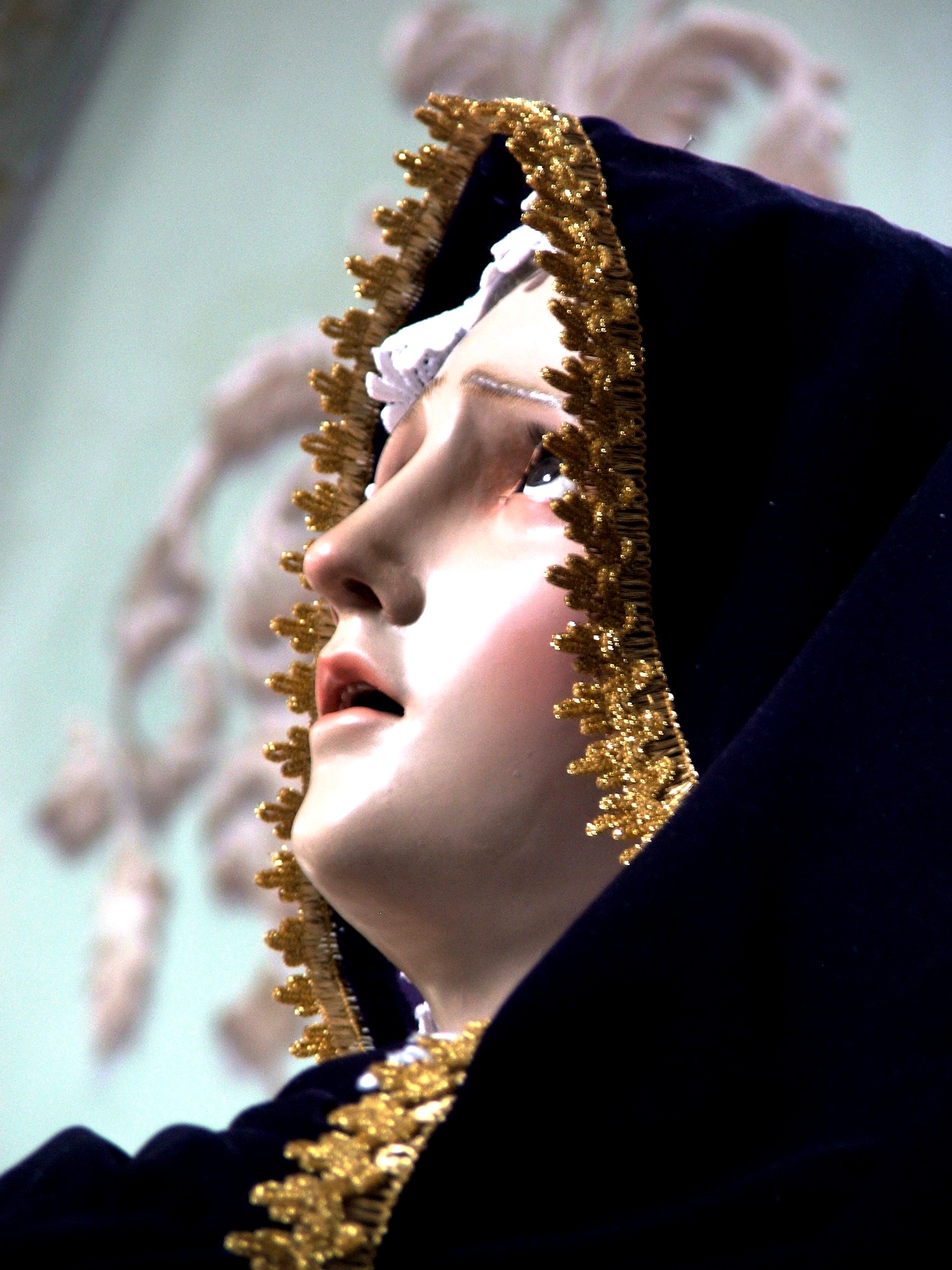 Ach, vy vôbec nič nechápete!
Ach, vy vôbec nič nechápete! 
 V posledných minútach pred príchodom šerifa, ktorý mal zločinca odviesť z cely na vykonanie rozsudku smrti, mu lekár Dr. Podesta naliehavo dohováral, aby si aspoň kľakol a pomodlil sa Otčenáš.
V posledných minútach pred príchodom šerifa, ktorý mal zločinca odviesť z cely na vykonanie rozsudku smrti, mu lekár Dr. Podesta naliehavo dohováral, aby si aspoň kľakol a pomodlil sa Otčenáš.

